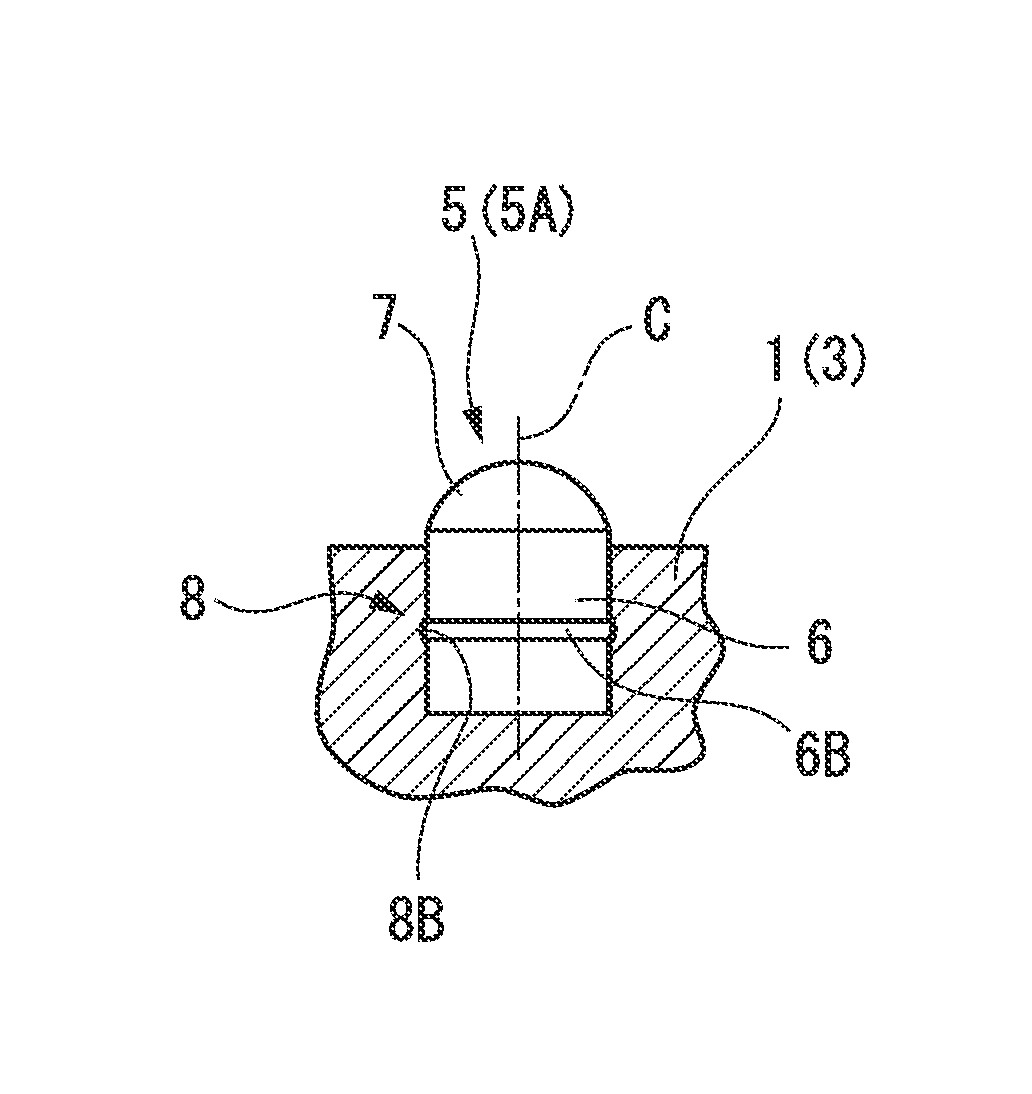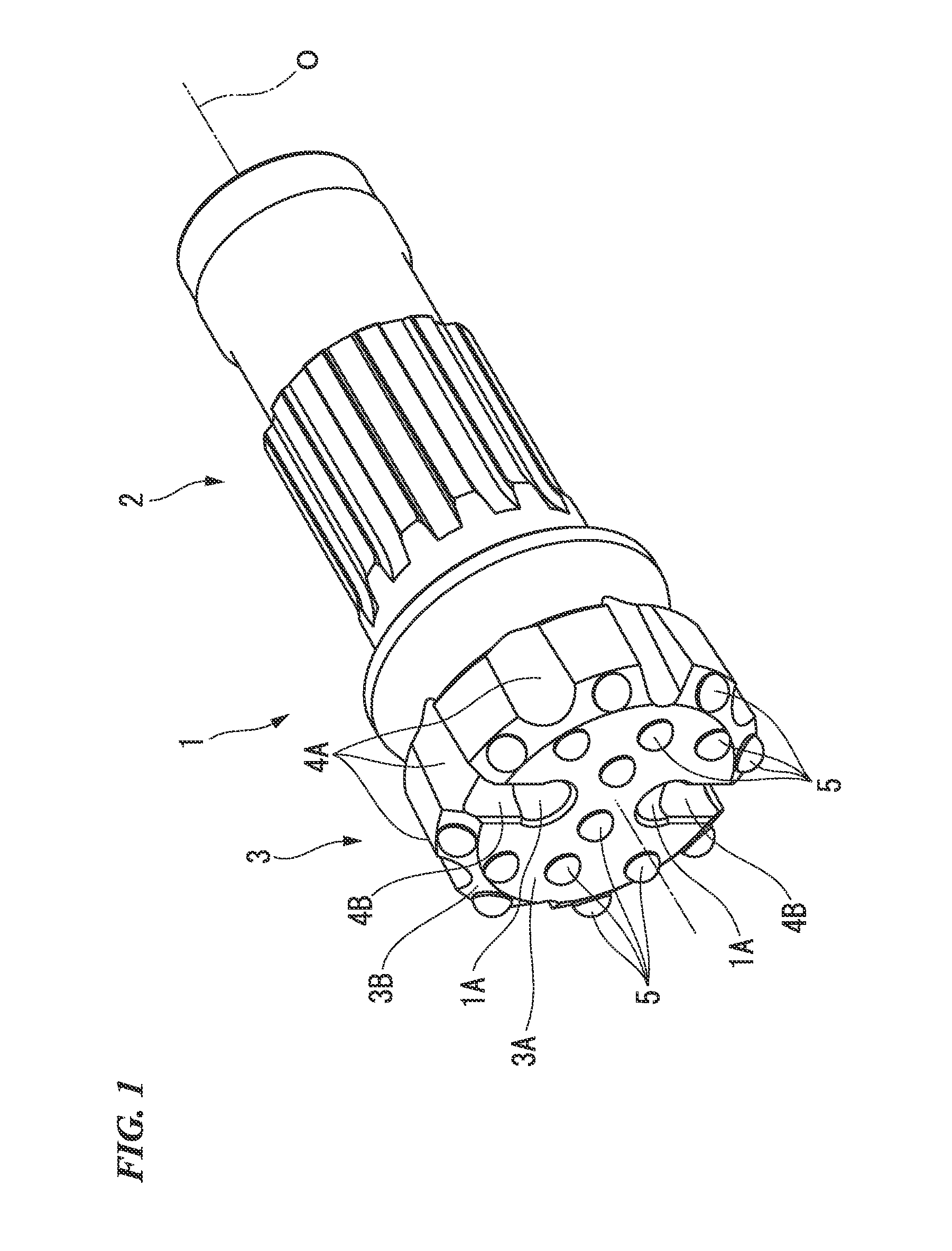Excavation tool
a technology of excavating tool and cutting edge, which is applied in the direction of earth drilling, earthwork drilling, construction, etc., can solve the problems of uneven reducing excavation efficiency, and uniform wear and abrasion of the cutting edge portion of the excavation tip, so as to reduce the excavation cost per unit depth, improve the tool life, and uniform wear of the cutting edge portion
- Summary
- Abstract
- Description
- Claims
- Application Information
AI Technical Summary
Benefits of technology
Problems solved by technology
Method used
Image
Examples
Embodiment Construction
[0066]FIGS. 1 to 5B respectively illustrate first to fourth embodiments of the present invention. In these embodiments, a tool body 1 is formed of steel. As illustrated in FIG. 1, a distal end thereof (left side portion in FIG. 1, lower side portion in each B view of FIGS. 2A to 5B) has a large diameter. An outer diameter thereof is gradually decreased as the tool body 1 faces a rear end side (right side portion in FIG. 1, upper side portion in each B view of FIGS. 2A to 5B). The tool body 1 has a substantially multi-stage cylindrical shape centered on an axis line O.
[0067]A rear end portion of the tool body 1 serves as a shank portion 2. The shank portion 2 is attached to a down-the-hole hammer (not illustrated). In this manner, the tool body 1 receives a striking force to a distal end side in a direction of the axis line O from the down-the-hole hammer. In addition, an excavator is connected to the rear end of the down-the-hole hammer via an excavation rod (not illustrated). The t...
PUM
 Login to View More
Login to View More Abstract
Description
Claims
Application Information
 Login to View More
Login to View More - R&D
- Intellectual Property
- Life Sciences
- Materials
- Tech Scout
- Unparalleled Data Quality
- Higher Quality Content
- 60% Fewer Hallucinations
Browse by: Latest US Patents, China's latest patents, Technical Efficacy Thesaurus, Application Domain, Technology Topic, Popular Technical Reports.
© 2025 PatSnap. All rights reserved.Legal|Privacy policy|Modern Slavery Act Transparency Statement|Sitemap|About US| Contact US: help@patsnap.com



